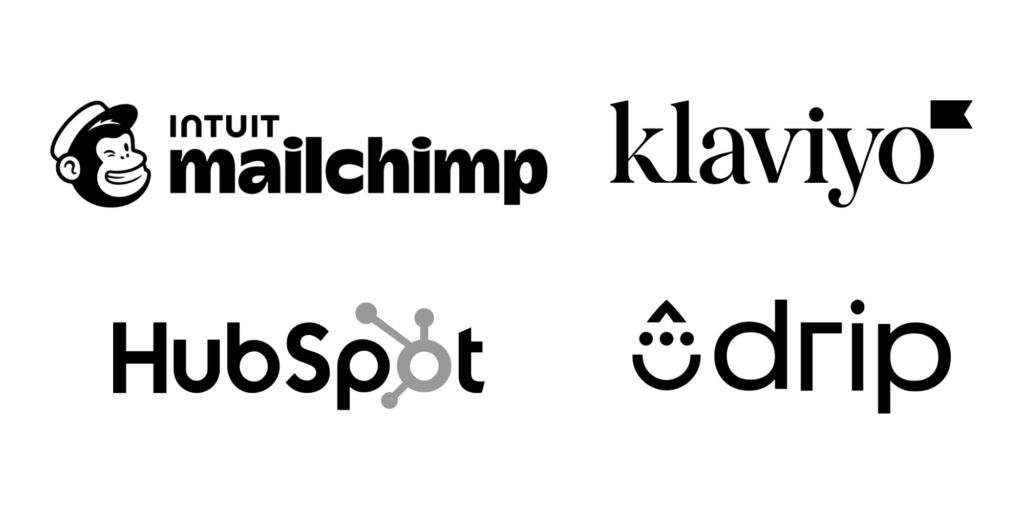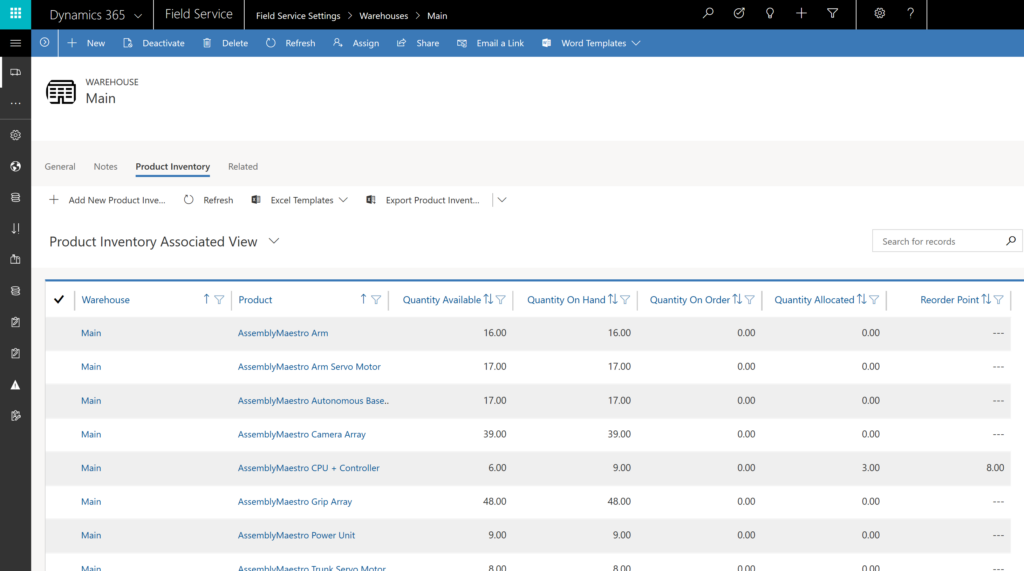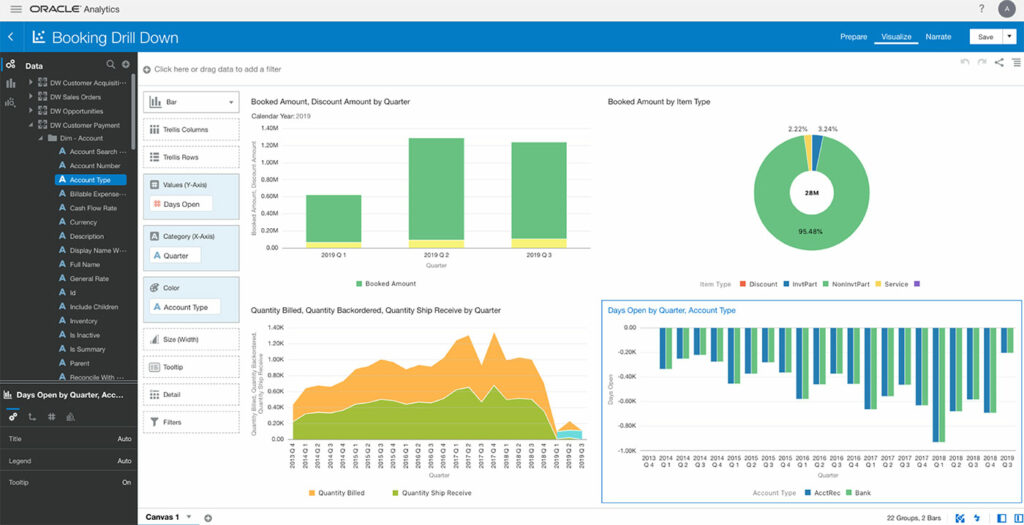Everything You Need To Know About E-Commerce To Supercharge Your Online Sales

Introduction
In recent years, e-commerce has become an increasingly important part of the business landscape. With the rise of online shopping and the convenience of buying products and services from the comfort of your own home, e-commerce has become a crucial tool for businesses looking to reach new customers and increase their sales.
Whether you’re a small business owner or a large corporation, e-commerce has the potential to supercharge your online sales and take your business to the next level. Here, we’ll provide you with everything you need to know about e-commerce, from choosing the right platform to marketing your online store, optimising your website for search engines, and more.
The Evolution of E-Commerce: From Brick and Mortar to Electronic Commerce
E-commerce has come a long way since its inception in the 1990s. Initially, e-commerce was mainly used by businesses to conduct transactions with other businesses (B2B). However, with the rise of the internet and the proliferation of online marketplaces, e-commerce has evolved to include a wide range of transaction types, including business-to-consumer (B2C) e-commerce transactions and consumer-to-business (C2B).
One of the most significant developments in the history of e-commerce has been the shift away from traditional brick-and-mortar retail to electronic e-commerce sites. Today, consumers can shop for everything from groceries to electronics online, and e-commerce has become an essential component of modern retail.
There are several different types of e-commerce, including B2B, B2C, C2B, and consumer-to-consumer (C2C). B2B e-commerce involves businesses conducting transactions with other businesses, while B2C e-commerce involves businesses buying and selling products directly to consumers.
C2B e-commerce is a relatively new type of e-commerce that involves consumers selling products or services to businesses. This can include everything from freelancers selling their services to businesses on platforms like Fiverr or Upwork to individuals selling their goods and services on platforms like eBay or Craigslist if you’re in America.
Overall, the evolution of e-commerce has been driven by advances in technology and changes in consumer behaviour. As more consumers have come to rely on the internet to research and purchase products, e-commerce has become an increasingly important channel for businesses to reach customers and generate sales.

The Benefits of E-Commerce
One of the primary benefits of e-commerce is its ability to reach a wider audience than traditional brick-and-mortar stores. By having an online store, you can sell your products to customers anywhere in the world, 24 hours a day, 7 days a week.
This can significantly increase your sales potential and help you reach customers that you may not have been able to otherwise. E-commerce can also be more cost-effective for business owners than traditional retail, as it eliminates many of the overhead costs associated with running a physical store.
This includes rent, utilities, and staffing, which can all add up to significant expenses. By running an online store, you can reduce these costs and reinvest the savings into your business online.

Understanding Your Target Market
In order to succeed in e-commerce, it’s crucial to understand your target market and what will make them feel reassured to enter their credit card details. This means researching and analysing your potential customers to determine their needs, preferences, and behaviours.
By understanding your target market, you can create a more effective marketing strategy and tailor your products and services to meet their needs.
There are many tools and resources available to help you research your target market, including online surveys, customer feedback, and analytics data. You can also use tools such as HotJar which monitors live website usage in the form of heatmaps and recordings to take out the guesswork.
By leveraging these tools, you can gain valuable insights into your customer’s behaviours, and preferences and use this information to improve your online store and increase your sales.

Choosing The Right E-Commerce Platform
When it comes to setting up an online store, one of the most important decisions you’ll make is choosing the right e-commerce platform. Many different e-commerce sales platforms are available, including Shopify, WooCommerce, BigCommerce, and Adobe Commerce, each with its own strengths and weaknesses.
When choosing an e-commerce platform, it’s important to consider factors such as your budget, the size and complexity of your store, and your technical expertise. You’ll also want to consider factors such as security, customisation options, and integrations with other tools and services.
Here is a list of strengths and weaknesses of some popular e-commerce platforms:
Shopify
Strengths:
- User-friendly and easy to use
- Offers a wide range of themes and plugins to customise your online store
- Provides excellent customer support and security measures
- Offers a range of pricing plans to suit different business needs
- Integrates with a variety of payment gateways and shipping providers
- Provides a secure and reliable hosting environment for your online store
Weaknesses:
- Can be expensive for businesses with high sales volume
- Limited control over the checkout process
- Limited customisation options for some areas of the platform
WooCommerce
Strengths:
- Highly customisable and flexible being open source (not a SaaS product like Shopify)
- Integrates seamlessly with WordPress, allowing you to leverage the platform’s powerful blogging and SEO features
- Offers a wide range of themes and plugins to customise your online store
- Provides full control over the checkout process
- WooCommerce is FREE to set up and integrated with WordPress
Weaknesses:
- Requires a lot more technical knowledge to set up and maintain as it’s open source
- Can be slower than other platforms, particularly for larger online stores
- Limited customer support compared to some other platforms
- Hosting isn’t included and must be set up separately
BigCommerce
Strengths:
- Offers a range of advanced features, including multi-channel selling, abandoned cart recovery, and customer segmentation
- Provides excellent customer support
- Offers a wide range of themes and plugins to customise your online store
- Integrates with a variety of payment gateways and shipping providers
- Provides a secure and reliable hosting environment for your online store
Weaknesses:
- Can be expensive for businesses with high sales volume
- Limited customisation options for some areas of the platform
- Can be more difficult to use than some other platforms
Adobe Commerce & Magento Open Source
Strengths:
- Highly customisable and flexible, with a wide range of themes and plugins available
- Provides full control over the checkout process
- Offers advanced features for multi-channel selling, inventory management, and order fulfilment
- Integrates with a variety of payment gateways and shipping providers
- Flexible hosting environments available including Adobe Commerce Cloud
- Offers strong SEO capabilities, making it a good choice for businesses looking to drive organic traffic to their online store
Weaknesses:
- Can be more difficult to use than some other platforms, particularly for beginners
- Requires technical knowledge to set up and maintain, making it a better choice for businesses with dedicated development resources (a team of developers)
- Can be expensive for businesses with high sales volume
- Hosting and security updates aren’t managed by Adobe
- Limited customer support compared to some other platforms
Overall, Shopify is widely regarded as one of the best SaaS E-commerce options for new businesses. It is user-friendly, easy to use, and provides excellent customer support. While it can be expensive for businesses with high sales volume, it is a popular choice for businesses of all sizes due to its reliability and ease of use.
The last thing you want to worry about when setting up an online store is security and hosting (keeping your store online and secure), therefore Shopify or BigCommerce are probably better options if you are new to this. You can always migrate to another CMS (content management system) in years to come.
Setting Up Your E-Commerce Store
Once you’ve chosen an e-commerce platform to sell products on, it’s time to set up your online store. This includes designing your website, creating product pages, and optimising your content for search engines.
When designing your website, it’s important to create a clean and user-friendly layout that makes it easy for customers to navigate and find what they’re looking for. You’ll also want to optimise your product pages with high-quality images and descriptions, as well as relevant keywords to help improve your search engine rankings.
There are plenty of templates to choose from with Shopify and BigCommerce if you choose a SaaS platform. Alternatively, if you choose WooCommerce and WordPress there are themes you can buy to install and set up to speed up the process. You will need a web developer to do this for you though.
Payment Processing and Security
One of the most important aspects of running an e-commerce store is ensuring that your customer’s payment information is secure. This means choosing a reliable payment processor and implementing security measures such as SSL certificates and two-factor authentication.
There are many different payment processors available, including PayPal, Stripe, and Square, each with its own strengths and weaknesses. When choosing a payment processor, it’s important to consider factors such as fees, ease of use, and customer support.
The most popular payment provider is Stripe if you require a third-party payment gateway. However, if you choose to use Shopify for example, they have their own payment gateway called Shop Pay which is supported and managed by them. It accepts Apple Pay, Google Pay and other forms of payment such as integration with Klarna and ClearPay.

Shipping and Fulfillment
Another critical aspect of running an e-commerce store is managing shipping and fulfilment. This includes setting up shipping options, managing inventory, and ensuring timely and accurate order fulfilment.
When it comes to shipping options, there are many different choices available, including free shipping, flat-rate shipping, and real-time shipping rates. You’ll also need to consider factors such as packaging materials, shipping carriers, and tracking and delivery notifications.
To manage your inventory effectively, you’ll need to track your stock levels and set up automatic reorder points to ensure that you don’t run out of stock. You’ll also want to optimise your shipping processes to ensure that orders are fulfilled quickly and accurately.
Most businesses connect their storefront to an ERP system (enterprise retail platform) such as Oracle Netsuite, Sage 200, SAP and Microsoft Dynamics 365. While you can manage a small store without an ERP system you should look to have one when you are looking to expand and grow your business as you have better control over order processing and internal operations and accounting.
Streamlining Your E-Commerce Storefront With Supply Chain Management and ERP Systems
One of the keys to running a successful e-commerce business is having a streamlined supply chain management process. This means effectively managing the flow of products from the manufacturer to the end customer, minimising delays and optimising efficiency. One way to do this is by integrating your e-commerce storefront with an Enterprise Resource Planning (ERP) system as we touched upon above.
ERP systems are software platforms that help businesses manage all aspects of their operations, including supply chain management, financials, human resources, and much more. By integrating your e-commerce storefront with your ERP system, you can gain greater visibility into your supply chain, reduce the risk of errors, and speed up the order fulfilment process.
Here are some tips for streamlining your e-commerce storefront with your ERP system:
- Automate order fulfilment: By integrating your e-commerce storefront with your ERP system, you can automate the order fulfilment process, from receiving orders to shipping products. This helps to minimise delays and reduce the risk of errors.
- Optimise inventory management: By integrating your storefront with your ERP system, you can gain real-time visibility into your inventory levels and automatically update your stock levels as products are sold. This helps to prevent overselling and stockouts.
- Improve customer service: By integrating your e-commerce storefront with your ERP system, you can provide customers with real-time updates on their orders, including tracking information and estimated delivery times. This helps to improve customer satisfaction and loyalty.
- Streamline accounting and financials: By integrating your e-commerce storefront with your ERP system, you can automate your accounting and financial processes, including invoicing and payments. This helps to minimise errors and speed up the payment process.
Overall, integrating your e-commerce storefront with an ERP system can help you to streamline your supply chain management process, reduce the risk of errors, and optimise efficiency.
By leveraging the latest technology and tools, you can stay ahead of the competition and build a successful e-commerce business model that generates consistent revenue and profitability for the foreseeable future. Automation and intelligent systems are key to online success in 2023.
Marketing Your E-Commerce Store
One of the most important factors in the success of digital products in your e-commerce store is your marketing strategy. This includes tactics such as social media marketing, email marketing, and paid advertising.
Social media can be a powerful tool for promoting your online store and engaging with customers. By creating and sharing valuable content on platforms such as Facebook, Instagram, and Twitter, you can build a following and increase brand awareness.
Email marketing can also be an effective way to reach customers and promote your products. By creating targeted email campaigns and offering exclusive promotions and discounts, you can encourage customers to make purchases and increase your sales.
Paid advertising, such as Google Ads and Facebook Ads, can also be a powerful tool for driving traffic to your online store and increasing your sales. By targeting your ads to specific audiences and optimising your campaigns for maximum ROI, you can generate a steady stream of new customers and sales.
Many of the leading SaaS and Open Source platforms have integrations with the likes of:
- Mailchimp
- Klaviyo
- HubSpot
- And Drip
To name a few campaign management applications to help with your marketing. It’s important to research how you need to communicate with your customers and choose the best tools which integrate with your storefront and ERP system.

Optimising Your E-Commerce Store For SEO
Search engine optimisation (SEO) is another important factor in the success of your e-commerce store. By optimising your website for search engines, you can improve your visibility in search results and drive more traffic to your own online retail store.
This includes optimising your product pages with relevant keywords and metadata, creating high-quality content that’s valuable to your target audience, and building high-quality backlinks to your website. You’ll also want to ensure that your website is mobile-friendly and loads quickly, as these are important factors in search engine rankings.
Having a large catalogue of products won’t necessarily mean you will do well on SERPs (search engine results pages) as product listings have limited descriptions and information in some cases.
Therefore it’s important to have an established blog section on your site where you write about valuable information like how-to guides and FAQs asked around your industry. For example, you may wish to provide fashion trend ideas if you run a clothing store and cross-reference products in the article for people to buy.

Providing Excellent Customer Service
Providing excellent customer service is crucial in e-commerce, as it can help you build trust with your customers and encourage repeat purchases. This includes responding promptly to customer inquiries and complaints, offering fast and reliable shipping, and providing a hassle-free returns policy.
You can also go above and beyond to provide exceptional customer service by offering personalised recommendations and product suggestions, creating loyalty programs and referral programs, and sending personalised thank-you notes and follow-up emails in correlation with marketing campaigns for example.
The best way to lower your cost per acquisition is to keep your retention rates high as customers tend to come directly to your website rather than click an advert which is fundamentally designed to bring in new customers. Amazon is a prime example of how customer retention and satisfaction shaped its success and climb to the top.
Analysing Your E-Commerce Data
Analysing your e-commerce data is crucial to understanding the performance of your online store and making data-driven decisions to improve your sales and profitability. This includes tracking key metrics such as traffic, sales, and conversion rates, as well as analysing customer data to gain insights into their behaviours and preferences.
By leveraging tools such as Google Analytics, you can gain valuable insights into your e-commerce data and use this information to optimise your online store and increase your sales. Understanding the customer’s behaviour and how your customers see your company is very important to succeed.
If you are slow to dispatch orders and you send very little information to customers you will generally find your conversion rates will drop and so will average order values. These are both critical KPIs (key performance indicators) you should look to improve upon.
A lot of data analysts incorrectly diagnose issues with marketing channels being the root cause when sales drop or ‘seasonal change’ happens. Now, that might be the case but often it’s down to poor planning, operations and website functionality that is underperforming.
Frequently monitoring page loading speeds, checkout behaviour and cross-referencing turnaround time internally will help improve your sales as you grow.
Scaling Your E-Commerce Store
Once you’ve established a successful e-commerce store, you may want to consider scaling your ecommerce business to reach even more customers and increase your true sales potential. This can involve expanding your product offerings, targeting new markets, and investing in more marketing and advertising.
It’s important to approach scaling your e-commerce store strategically, taking into account factors such as your budget, resources, and competition. By gradually expanding your own business models and testing new strategies, you can continue to grow your online sales and achieve long-term success.
Remember though, take your time to plan and don’t over-commit as you could potentially ruin your reputation if you cannot fulfil customer expectations. The bar has been raised considerably in the last 5-10 years based on Amazon’s unbelievable turnaround time and quality of services which means you need to mirror your own services as much as you can to theirs.

Conclusion
In conclusion, e-commerce has the potential to supercharge your online retail sales and take your business to the next level. By choosing the right e-commerce platform, optimising your website for search engines, marketing your online store effectively, and providing excellent customer service, you can build a successful e-commerce business that generates consistent revenue and profitability.
Remember that success in e-commerce requires a combination of technical expertise, marketing know-how, and a deep understanding of your target audience. By continually refining your e-business and strategies and leveraging the latest tools and technologies, you can stay ahead of the competition and achieve sustained growth over the long term.
Whether you’re just starting out with e-commerce or looking to take your online sales to the next level, there are plenty of resources available to help you succeed. From other online stores, courses and tutorials to e-commerce consultants and digital agencies, many experts and resources are available to help you build a successful online store.
So if you’re ready to take your online business to the next level, now is the time to start exploring the exciting world of e-commerce and all the opportunities it has to offer. With the right tools, strategies, and mindset, you can build a successful e-commerce business that generates consistent sales and profits for years to come.









